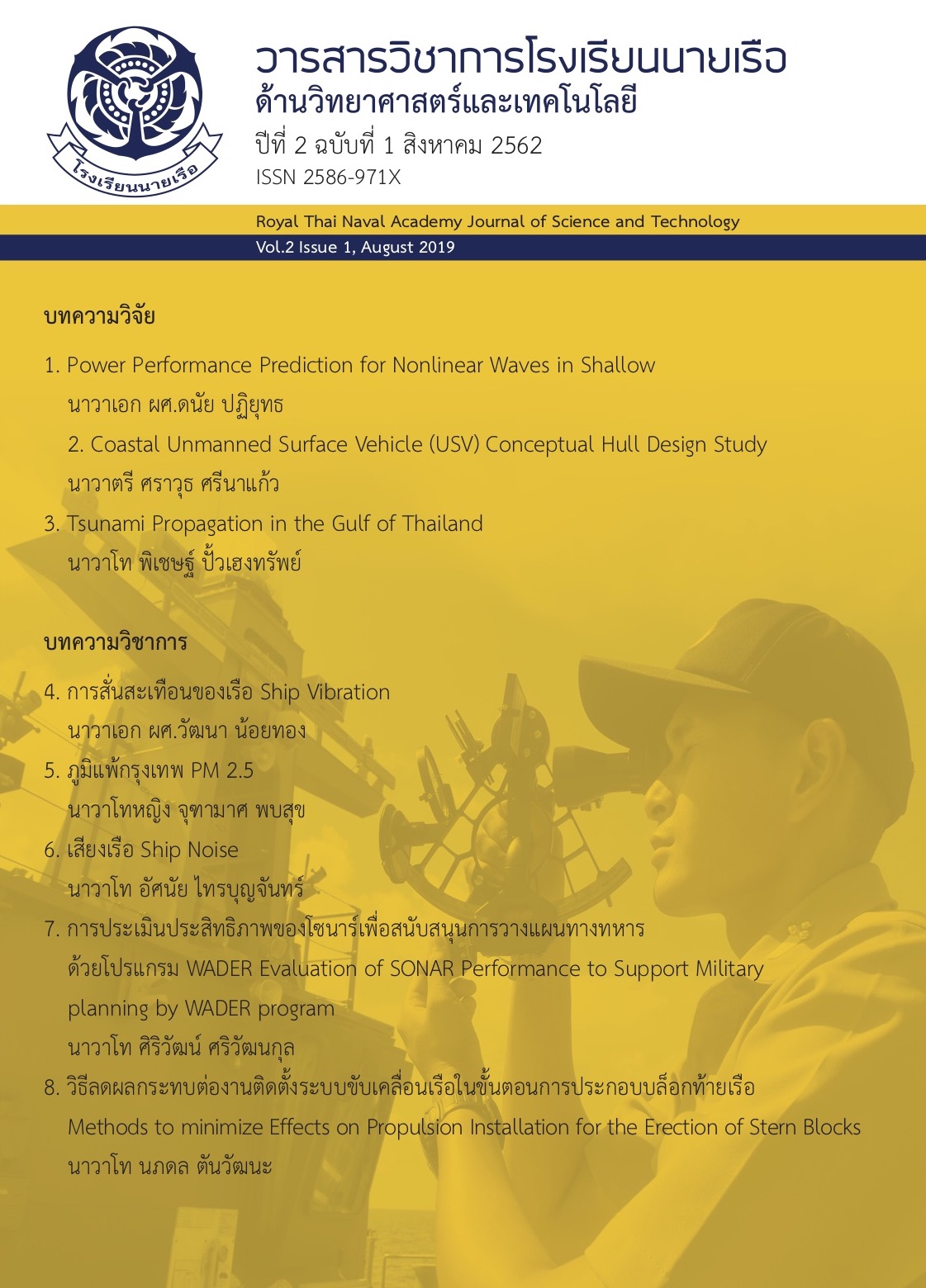Coastal Unmanned Surface Vehicle (USV) Conceptual Hull Design Study
Main Article Content
บทคัดย่อ
The Applications of the Unmanned Surface Vehicle (USV) are widely used as can be seen in both commercial and military purposes. As the main design aspect of the hull is to endure the harsh sea condition where is not the human friendly environment, the hull performance in waves is the main area which needs a special investigation. This paper presents the study of the hull performance for three different hull geometries. These hulls are Deep Vee (DV), high-slenderness hull (NPL 5b) and the Royal Thai Naval Dockyard designed patrol boat (T991). Required propulsive power and hull performance in waves are investigated. The results show that the DV model seems to have advantage over other hull geometries.
Article Details
เนื้อหาและข้อมูลในบทความที่ลงตีพิมพ์ในวารสารวิชาการโรงเรียนนายเรือ ด้านวิทยาศาสตร์และเทคโนโลยี ถือเป็นข้อคิดเห็นและความรับผิดชอบของผู้เขียนบทความโดยตรง ซึ่งกองบรรณาธิการวารสาร ไม่จำเป็นต้องเห็นด้วย หรือร่วมรับผิดชอบใด ๆ
บทความ ข้อมูล เนื้อหา รูปภาพ ฯลฯ ที่ได้รับการตีพิมพ์ในวารสารวิชาการโรงเรียนนายเรือ ด้านวิทยาศาสตร์และเทคโนโลยี ถือเป็นลิขสิทธิ์ของโรงเรียนนายเรือ หากบุคคลหรือหน่วยงานใดต้องการนำทั้งหมดหรือส่วนหนึ่งส่วนใดไปเผยแพร่ต่อหรือเพื่อกระทำการใด ๆ จะต้องได้รับอนุญาตเป็นลายลักษณ์อักษรจากโรงเรียนนายเรือก่อนเท่านั้น
เอกสารอ้างอิง
Kim, D.J., Kim, S.Y., You, Y.J., Rhee, K.P., Kim, S.H., and Kim, Y.G., (2013), Design of high-speed planning hulls for the improvement of resistance and seakeeping performance, Int. J. Naval Archit. Ocean Eng.5:161~177
Holtrop, J. and Mennen, G.G.J., (1984), A statistical re-analysis of resistance and propulsion data, ISP, Vol. 31, No. 363, November 1984.
Holtrop, J. (1988), A statistical resistance prediction method with a speed dependent form factor, SMSSH’88, Varna, Oct. 1988.
Savitsky, D., (1964), Hydrodynamic Design of Planing Hulls, Marine Technology, Vol. 1, No. 1, October 1964
Savitsky, D., and Brown, P.W., (1976), Procedures for Hydrodynamic Evaluation of Planing Hulls in Smooth and Rough Water, Marine Technology, Vol. 13, No. 4


